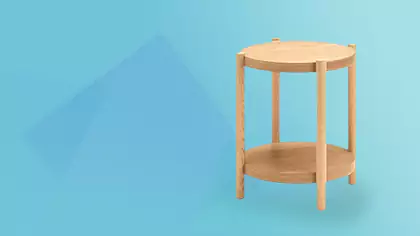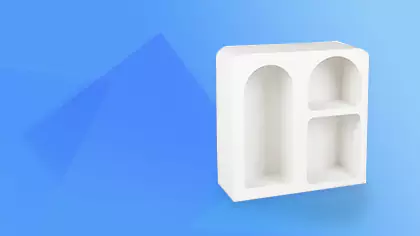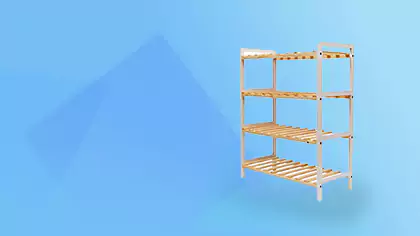A multi-layer coat rack with shoe storage is like the Swiss Army knife of entryway furniture—it combines hanging space, shelving, and even seating into one compact unit. Imagine walking through your front door, shrugging off your coat, dropping your keys onto a little shelf, and sliding your shoes neatly onto a lower rack, all in one smooth motion. No more tripping over stray boots or fishing slippers out from under the console table. It’s an all-in-one solution that turns a cluttered foyer into a streamlined welcome station.

This article will guide you through everything you need to know: from the basics of what these racks are and why they’re game-changers, to the benefits they deliver, the styles you can choose, and the key features that make one model better than another. Ready to revolutionize your entryway? Let’s dive in.
What Is a Multi-Layer Coat Rack with Shoe Storage?
At its core, a multi-layer coat rack with shoe storage is a vertical organizer designed to hold coats, hats, bags—and shoes—all in one footprint. Unlike standalone coat hooks or separate shoe benches, this hybrid piece stacks hook bars, shelves, and racks vertically. Depending on the design, you might see two or three tiers of coat hooks at different heights, a middle shelf for small accessories like wallets or sunglasses, and a bottom shoe rack that can hold anywhere from two to a dozen pairs.
Think of it as a mini-mudroom you can tuck into a narrow hallway or corner of your bedroom. The “multi-layer” aspect refers to the vertical stacking of functions—each layer is optimized for a specific item category (coats, keys, shoes), making the most of often-unused vertical wall space.
Why Choose a Combined Coat and Shoe Organizer?
If you’ve ever tripped over a rogue sneaker or stared helplessly at a pile of jackets, you know the pain of an unorganized entryway. A combined organizer solves this by creating designated spots for the items you grab on your way out the door. No more digging under the bench for your matching pair or tossing scarves onto a chair.
Beyond neatness, these units save space. Rather than dedicating one wall to hooks and another to a shoe rack, you get both in one slim profile—ideal for apartments, narrow entryways, and even offices. Plus, having everything in one station streamlines your morning routine: coat on, shoes off, keys placed—all in consecutive steps that leave less room for forgetfulness.
Finally, there’s an aesthetic bonus. A well-designed rack becomes part of your décor, offering a cohesive look instead of a hodgepodge of separate pieces. Choose a finish that matches your trim, add decorative baskets on the middle shelf, or line the shoe rack with a patterned mat—suddenly your entryway feels intentional rather than an afterthought.
Benefits of a Multi-Layer Coat Rack with Shoe Storage
Maximizing Vertical Space
One of the biggest advantages is vertical efficiency. Floor space is precious, especially in small homes. By building “up” instead of “out,” multi-layer racks provide hanging and shelving in the same footprint that a single piece might occupy. Even a narrow rack just a foot deep can deliver three tiers of hooks plus a shoe row, turning an empty wall into a powerhouse organizer.
Keeping Entryways Tidy and Clutter-Free
When every item has a home—coats on hooks, keys on a shelf, shoes on a rack—there’s no reason for clutter to accumulate. No more shoes scattered across the floor or scarves draped over chairs. It’s much easier to maintain tidiness when storage is intuitive and within reach.
Easy Access and Organization
With layered design, you can assign specific tiers for family members or seasons. Place higher hooks for children’s coats, middle hooks for adults, and reserve the top shelf for hats or seasonal gear. Shoes line up on the bottom, making it simple to spot and grab the pair you need without rummaging through a pile.
Versatility and Mobility
Many multi-layer racks are freestanding and lightweight, meaning you can relocate them as needed—perfect for renters or those who like to refresh their layout. Some models include hooks on wheels or detachable shelves, turning the unit into a mobile station that can roll into a closet, garage, or even veranda when entertaining.
Design and Style Variations
Industrial Metal Frames
Industrial designs lean into raw steel pipes, black powder-coated finishes, and minimalist lines. These racks often feature metal slatted shelves for shoes and metal hooks welded directly to the frame. They pair beautifully with exposed brick walls or concrete floors, delivering a utilitarian vibe that’s both rugged and refined.
Rustic Wooden Styles
If you crave warmth, rustic wooden racks are crafted from reclaimed pine, oak, or bamboo. Oversized pegs, distressed finishes, and chunky shelves give off a cozy cottage or farmhouse feel. Paired with woven baskets on the middle tier, they bring texture and charm to any entryway.
Modern Minimalist Designs
Clean lines, hidden hardware, and neutral hues define the minimalist approach. Look for racks where the hooks retract or where thin metal arms fold flat when not in use. Often finished in matte white, soft gray, or raw steel, these designs feel airy and sophisticated—perfect for Scandinavian-inspired interiors.
Vintage and Retro-Inspired Models
For a dash of nostalgia, retro models use pastel colors, curved shapes, and decorative flourishes like checkerboard shoe shelves or ornate metalwork. These racks make a statement and can double as art pieces in an eclectic hallway or mid-century modern entry hall.
Key Features to Consider
Number of Layers and Hooks
Count the coats, bags, and umbrellas your household uses daily. Opt for racks with at least one extra hook per person so there’s room to grow. Three-tier racks typically provide 8–12 hooks, while two-tier designs offer 6–8. More layers mean more hanging options but also a taller profile to fit under your ceiling.
Shoe Shelf Capacity and Material
Check how many pairs the bottom rack holds and whether it’s designed for heels, sneakers, or boots. Metal slats, wooden planks, and wire grids all have different load ratings—make sure the material can support the weight of heavy winter boots as well as lightweight slippers.
Weight Capacity and Stability
A loaded rack can get heavy. Look for steel-reinforced frames or solid wood posts, and check maximum load specs—some premium models support up to 200 lbs (90 kg) of gear. If the rack wobbles when you hang a jacket, consider wall-anchoring kits or choosing a sturdier freestanding base.
Adjustable and Modular Components
Some racks let you move hooks or shelves up and down, while others offer modular add-ons like umbrella stands or detachable baskets. These features future-proof your investment—if your needs change, you can reconfigure rather than replace the entire unit.
Materials and Build Quality
When you’re choosing a multi-layer coat rack with shoe storage, the materials and construction are the backbone of both its longevity and its style. Let’s break down the most common options and what to look for.
Solid Wood vs Engineered Wood
Solid hardwoods like oak, maple, or pine bring warmth and can stand up to years of daily use. You’ll immediately notice the heft and sturdiness when you pick it up—no wobble, no give. Engineered woods (think MDF or plywood veneers) often cost less but can sag or swell over time if moisture gets in. If you spot a bargain on an engineered-wood rack, make sure it’s sealed well and has reinforced corners.
Metal Frames and Shelves
Steel or iron frames deliver industrial strength, perfect for heavy winter coats and multiple pairs of boots. Powder-coated finishes resist scratches and rust, so your rack looks fresh even if kiddos lean bikes or skateboards against it. Pay attention to weld quality: smooth, even joints mean a stronger frame. Thin or hollow tubing might flex under load—look for thicker-gauge metal if you’re planning to hang bulky items.
Plastic and Composite Accents
Some racks combine metal posts with plastic connectors or shoe trays. High-impact plastics can be surprisingly durable, but cheaper plastics may crack over time, especially if exposed to sunlight or temperature swings. If you love the look of colored accents (white, pastel, or bold hues), verify that the plastic parts feel solid and snap together cleanly.
Joinery and Fasteners
Whether it’s dowels in wood or screws in metal, inspect how pieces attach. Hand-tightened cam locks and Allen bolts are common—and generally reliable—but low-quality fasteners can loosen and threaten stability. Always opt for a model that includes extra hardware, and consider adding thread-locking compound on metal screws if you notice any wobble.
Where to Buy and Price Ranges
Knowing where to shop and what to expect price-wise prevents sticker shock and ensures you get the best bang for your buck.
Big-Box Retailers
Stores like IKEA, Home Depot, and Target carry budget-friendly racks starting around $60 to $120. For that price you’ll find basic metal frames with painted finishes or simple wooden posts with pre-drilled hooks. Assembly is usually straightforward, and replacement parts are easy to come by. However, styles can be generic—and durability varies. Read reviews to make sure the rack you pick has a track record of holding up.
Online Marketplaces
Amazon, Wayfair, and Overstock boast hundreds of options across every price tier. Here you’ll see contemporary designs with sleek finishes at $100–$200, as well as premium pieces ($300–$500) made by boutique brands. Filters let you sort by material, height, and customer rating—handy when narrowing down thousands of listings. One caveat: shipping fees and return policies differ widely, so factor that into your total cost.
Specialty Furniture Boutiques
For unique, artisanal racks—think reclaimed wood beams or custom-welded steel—you’re looking at $250–$600 (or more). These pieces often showcase hand-crafted details, from leather straps for hooks to hand-forged metal accents. Delivery times may be longer, but you’ll walk away with a statement piece.
Secondhand and Thrift
Don’t overlook local thrift shops, Facebook Marketplace, or Craigslist. A solid vintage hat stand or industrial pipe rack can be repurposed for $20–$100. You might need to add shelves or fresh paint, but for DIY enthusiasts, it’s a budget-friendly way to score character-filled storage.
Styling and Decorative Ideas
Your coat rack is not just functional; it’s a decor statement that greets every guest—and every morning, you. Here are some playful ways to elevate its look.
Layer with Baskets and Boxes
Add woven baskets or fabric bins on the middle shelf. They corral gloves, scarves, and mail, while introducing texture and color. Choose baskets that complement your coat rack’s material—sea-grass bins for a coastal vibe, or dark wicker for farmhouse warmth.
Accent Wall and Backdrops
Mount the rack against wallpapered or boldly painted walls for instant drama. A geometric print can make a minimalist metal frame pop, whereas a muted sage or slate backdrop allows rich wooden posts to stand out. If you rent and can’t paint, cut a piece of removable wallpaper to size and stick it behind the rack.
Mirrors and Lighting
Flank your rack with a slim mirror to help you check your look before heading out. Soft LED strip lighting beneath the top shelf adds ambience and helps you spot shoes in dim hallways. Warm white LEDs lend a cozy glow; color-changing strips let you switch up the mood.
Integrate Greenery
Place a small potted plant or trailing ivy on one of the mid-level shelves. The organic form of greenery softens the straight lines of hooks and shelves, making the entryway feel more inviting. Just be sure to choose low-light tolerant plants like pothos or snake plants if the corner is dim.
Seasonal Swaps
Make your coat rack the centerpiece of seasonal decor. Hang wreaths at the top in winter, drape fairy lights around the posts in the holidays, or add small gourds and dried flowers come fall. This keeps the space feeling fresh all year long.
Maintenance and Cleaning
Keeping your multi-layer coat rack looking great and functioning smoothly is easier than you think—and prevents small issues from becoming big headaches.
Weekly Dusting
Hooks and shelves collect dust quickly, especially in high-traffic entryways. A quick wipe with a microfiber cloth or a duster prevents buildup and keeps surfaces looking clean. Pay special attention to crevices where scarves or bags brush against metal or wood.
Deep Clean Monthly
For wood frames, mix a teaspoon of mild dish soap into a quart of warm water, dampen a soft cloth, and gently wipe down surfaces. Dry immediately to avoid moisture damage. Metal parts can be cleaned similarly—just avoid harsh abrasives that could strip powder coatings. For plastic or composite trays, a diluted vinegar solution (one part white vinegar to three parts water) keeps them streak-free and disinfected.
Tighten Hardware
Every few months, check screws, bolts, and connectors. Seasonal temperature changes can cause metal to expand or wood to shift slightly, loosening fasteners over time. A simple twist with an Allen key or screwdriver takes seconds and ensures stability.
Treating Scratches and Scuffs
Minor scratches on wood can be hidden with furniture touch-up markers. For metal, use a matching spray-paint pen to spot-repair chips. Plastic trays that have gouges or cracks might be replaced inexpensively—many manufacturers sell parts separately.
Rust Prevention
If your rack lives in a humid climate or near an entryway that gets wet from rain and snow, consider a clear rust-inhibitor spray on metal components. Wipe off any moisture as soon as you see it to keep corrosion at bay.
Budget Planning and Cost-Saving Tips
Looking great doesn’t have to mean spending big. With a bit of planning, you can enjoy a stylish and sturdy coat-and-shoe station without blowing the budget.
Set Your Spending Limit
Decide how much you’re willing to invest before you start browsing. A $100-$150 budget will get you a solid basic rack, while $200-$300 unlocks higher-end finishes and sturdier builds. Anything above $300 often includes designer details or premium materials.
DIY Upgrades
Bought a plain metal frame? Spruce it up with wooden shelves you cut yourself from pallet wood. Attach corkboard panels or chalkboard paint to the back for notes and reminders. These weekend projects often cost under $50 in materials but add serious personality.
Wait for Sales and Clearance
Major retailers discount home-furnishing items around Black Friday, end-of-season clearances, or holiday weekends. Sign up for store newsletters to get notified of flash sales. Even mid-tier brands will slash prices by 20–30% at the right time.
Bundle and Bundle
Some vendors offer free or reduced shipping if you order multiple pieces. Pair your coat rack with a matching console table or bench and save on delivery costs. If you only need the rack, see if a nearby friend or neighbor wants something too—you can split shipping fees.
Thrift and Upcycle
Scour Facebook Marketplace, estate sales, and thrift stores. A sturdy vintage hatstand or a ladder bookshelf can be repurposed into a multi-layer organizer. A coat of paint and a few added hooks often transform the piece into a unique, wallet-friendly solution.
Conclusion and Final Thoughts
A multi-layer coat rack with integrated shoe storage is more than just a piece of furniture—it’s a lifeline for busy households, a space-saving marvel for compact homes, and a style statement that greets you every time you walk through the door. By stacking hooks, shelves, and racks vertically, these organizers harness underutilized wall space and turn chaos into calm. With the right combination of materials—whether solid wood’s timeless warmth, metal’s industrial strength, or a hybrid build—you can find a model that not only supports your daily essentials but complements your décor.
Throughout this guide, we’ve covered how to identify the features that matter most—layer count, weight capacity, shoe shelf design, and modular flexibility—and how to shop wisely, from budget-friendly big-box buys to one-of-a-kind artisanal creations. We’ve also explored styling tips, from woven baskets for mittens to accent walls that make your rack pop, and maintenance routines that keep everything looking and functioning like new. With a bit of planning—measuring your entryway, tallying your family’s coat and shoe needs, and setting a clear budget—you’ll avoid the common pitfalls of mismatched size or insufficient storage.
The beauty of a well-chosen coat rack with shoe storage lies in its silent efficiency: it corrals clutter before it becomes a problem, streamlines your morning routine, and presents a harmonious first impression to guests. Whether you’re fighting for prime real estate in a narrow hallway or simply crave a neater, more intentional entryway, this multifunctional solution delivers on promise after promise.











